Few marques have achieved so fine a competition record in so short a time as Mondial, the Italian company’s period at the very top of Grand Prix racing encompassing the years 1949-51, plus a gloriously successful comeback in 1957. Founded in Bologna in 1929, Mondial concentrated on the manufacture of commercial vehicles prior to WW2, only turning to motorcycle making in 1948 following a meeting between co-founder Guiseppe Boselli and engineer Alfonso Drusiani. Flying in the face of accepted wisdom, Drusiani believed that it was possible for a four-stroke to compete against the two-strokes - fielded by MV Agusta and Morini - then dominating the ultra-lightweight class. To obtain the necessary power output, Drusiani specified twin overhead camshafts for Mondial’s 123cc single, driven from the crankshaft by shaft and bevel gears. Although the all-aluminium, unit-construction engine was state-of-the-art at the time, the Mondial racer’s cycle parts were somewhat dated, consisting as they did of a spindly duplex cradle frame, blade-type girder forks, plunger rear suspension and wheels and tyres of a narrowness more usually associated with autocycles. Nevertheless, the Mondial’s maximum power of 11bhp allied to a dry weight of only 195lbs gave it a performance advantage that more than offset the deficiencies of its chassis. After a successful debut season in 1948 which saw works rider Nello Pagani win the Italian Grand Prix, the little Mondial was further improved for 1949. Maximum power was raised to 13bhp and Pagani duly brought Mondial its first World Championship, winning two of the three rounds and finishing sixth in the other, which was won by team-mate Giani Leoni. Mondial’s dominance of the 125 class remained just as overwhelming for the next two years, Bruno Ruffo taking the title in 1950 and Carlo Ubbiali in 1951, before Cecil Sandford struck back for MV Agusta in 1952. The mid-1950s would prove to be relatively lean years for Mondial, for not only did it have MV to contend with but also newcomers NSU, the German firm enjoying a clean sweep of the lightweight and ultra-lightweight classes for the next two years. One ray of hope however, had been the emergence in Italy of a future star: Tarquinio Provini. Riding a Mondial production racer, Provini had dominated Italian national racing’s 125cc class in 1953 and was recruited into the works squad for 1954. However, even Provini’s prodigious talent could not make up for a lack of machine development, and success remained elusive while Drusiani took Mondial up a number of blind alleys. Then in 1957, having experimented with an over-bored 175cc single in the lightweight class and then a full-sized twin, Drusiani drew up an entirely new 246cc single and revamped the existing 125. The result was a magnificent return to former glory, Provini ending the season as 125cc World Champion while newly recruited Cecil Sandford took the 250 crown. Provini became Italian national champion in both classes. Sadly, what should have been the dawning of a new golden age for the Bologna marque was not to be: Mondial, along with Moto Guzzi and Gilera, withdrew from Grand Prix racing at the season’s end, and although the firm built a number of - mainly two-stroke - racers in the 1960s, it never achieved the same heights. The machine offered here is one of Mondial’s 250cc Grand Prix racers dating from its resurgent 1957 season and is reported to be a ‘spare’ used by Provini rather than his ‘No.1’ race bike. The very last Mondial singles featured twin overhead camshafts driven by a train of spur gears running up the engine’s right-hand side, whereas this ‘interim’ example has the preceding shaft-and-bevel drive. These machines could be fitted with five-, six- or seven-speed gearboxes according to the nature of the circuit, and this example has the seven-speed unit. The front brake and seat are later upgrades almost certainly dating from the Villa brothers’ period of association with Mondial during the
Few marques have achieved so fine a competition record in so short a time as Mondial, the Italian company’s period at the very top of Grand Prix racing encompassing the years 1949-51, plus a gloriously successful comeback in 1957. Founded in Bologna in 1929, Mondial concentrated on the manufacture of commercial vehicles prior to WW2, only turning to motorcycle making in 1948 following a meeting between co-founder Guiseppe Boselli and engineer Alfonso Drusiani. Flying in the face of accepted wisdom, Drusiani believed that it was possible for a four-stroke to compete against the two-strokes - fielded by MV Agusta and Morini - then dominating the ultra-lightweight class. To obtain the necessary power output, Drusiani specified twin overhead camshafts for Mondial’s 123cc single, driven from the crankshaft by shaft and bevel gears. Although the all-aluminium, unit-construction engine was state-of-the-art at the time, the Mondial racer’s cycle parts were somewhat dated, consisting as they did of a spindly duplex cradle frame, blade-type girder forks, plunger rear suspension and wheels and tyres of a narrowness more usually associated with autocycles. Nevertheless, the Mondial’s maximum power of 11bhp allied to a dry weight of only 195lbs gave it a performance advantage that more than offset the deficiencies of its chassis. After a successful debut season in 1948 which saw works rider Nello Pagani win the Italian Grand Prix, the little Mondial was further improved for 1949. Maximum power was raised to 13bhp and Pagani duly brought Mondial its first World Championship, winning two of the three rounds and finishing sixth in the other, which was won by team-mate Giani Leoni. Mondial’s dominance of the 125 class remained just as overwhelming for the next two years, Bruno Ruffo taking the title in 1950 and Carlo Ubbiali in 1951, before Cecil Sandford struck back for MV Agusta in 1952. The mid-1950s would prove to be relatively lean years for Mondial, for not only did it have MV to contend with but also newcomers NSU, the German firm enjoying a clean sweep of the lightweight and ultra-lightweight classes for the next two years. One ray of hope however, had been the emergence in Italy of a future star: Tarquinio Provini. Riding a Mondial production racer, Provini had dominated Italian national racing’s 125cc class in 1953 and was recruited into the works squad for 1954. However, even Provini’s prodigious talent could not make up for a lack of machine development, and success remained elusive while Drusiani took Mondial up a number of blind alleys. Then in 1957, having experimented with an over-bored 175cc single in the lightweight class and then a full-sized twin, Drusiani drew up an entirely new 246cc single and revamped the existing 125. The result was a magnificent return to former glory, Provini ending the season as 125cc World Champion while newly recruited Cecil Sandford took the 250 crown. Provini became Italian national champion in both classes. Sadly, what should have been the dawning of a new golden age for the Bologna marque was not to be: Mondial, along with Moto Guzzi and Gilera, withdrew from Grand Prix racing at the season’s end, and although the firm built a number of - mainly two-stroke - racers in the 1960s, it never achieved the same heights. The machine offered here is one of Mondial’s 250cc Grand Prix racers dating from its resurgent 1957 season and is reported to be a ‘spare’ used by Provini rather than his ‘No.1’ race bike. The very last Mondial singles featured twin overhead camshafts driven by a train of spur gears running up the engine’s right-hand side, whereas this ‘interim’ example has the preceding shaft-and-bevel drive. These machines could be fitted with five-, six- or seven-speed gearboxes according to the nature of the circuit, and this example has the seven-speed unit. The front brake and seat are later upgrades almost certainly dating from the Villa brothers’ period of association with Mondial during the
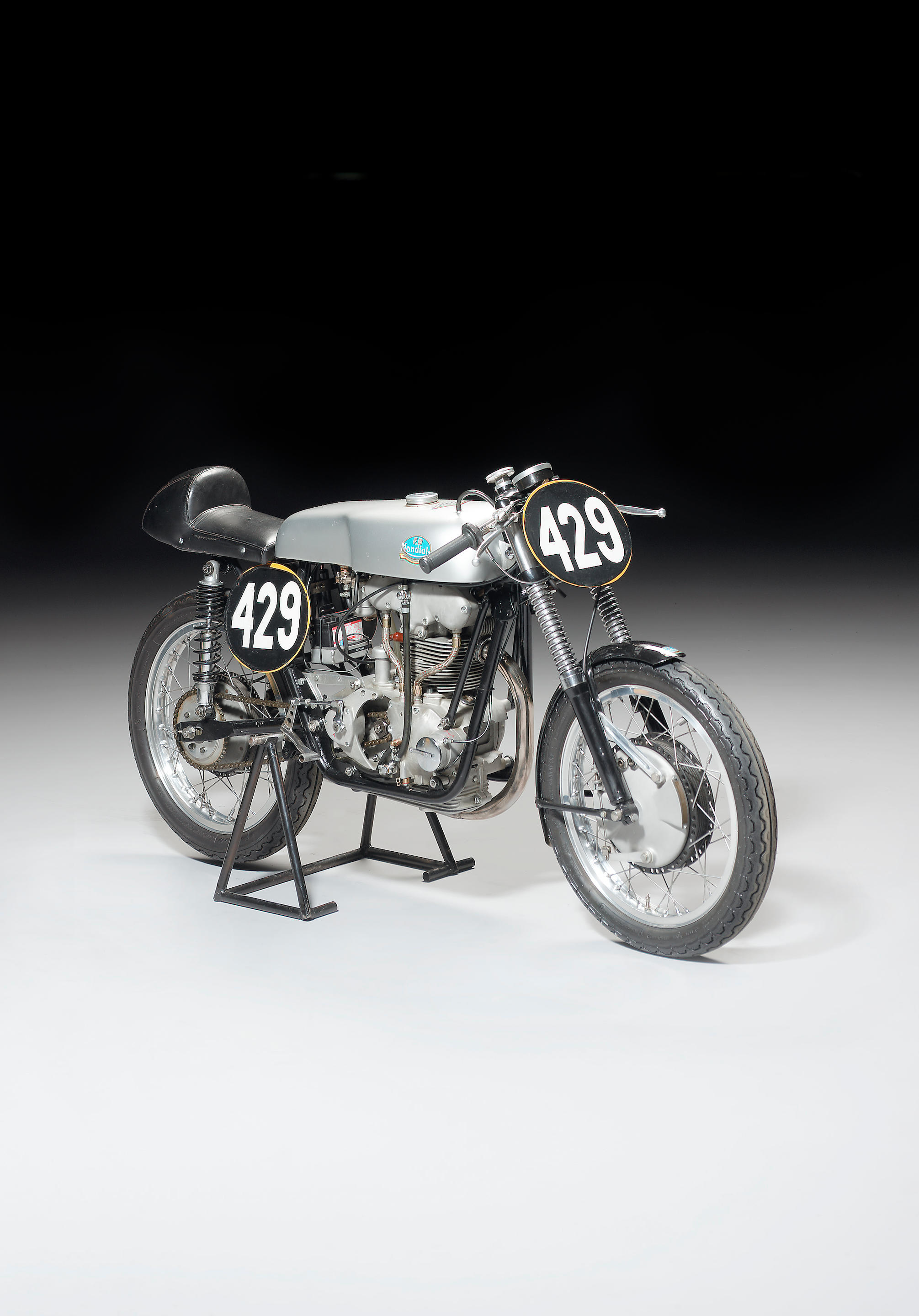
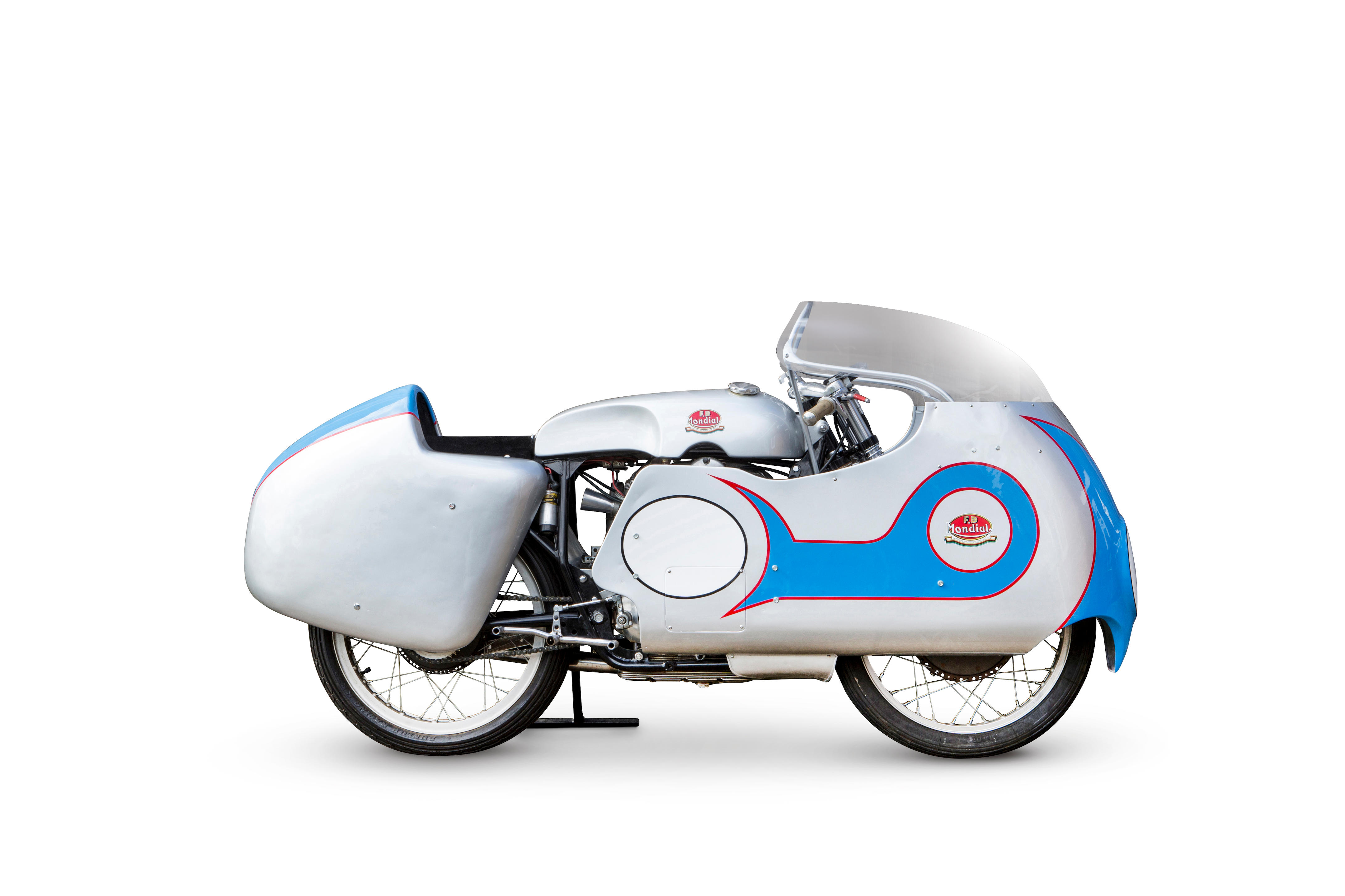
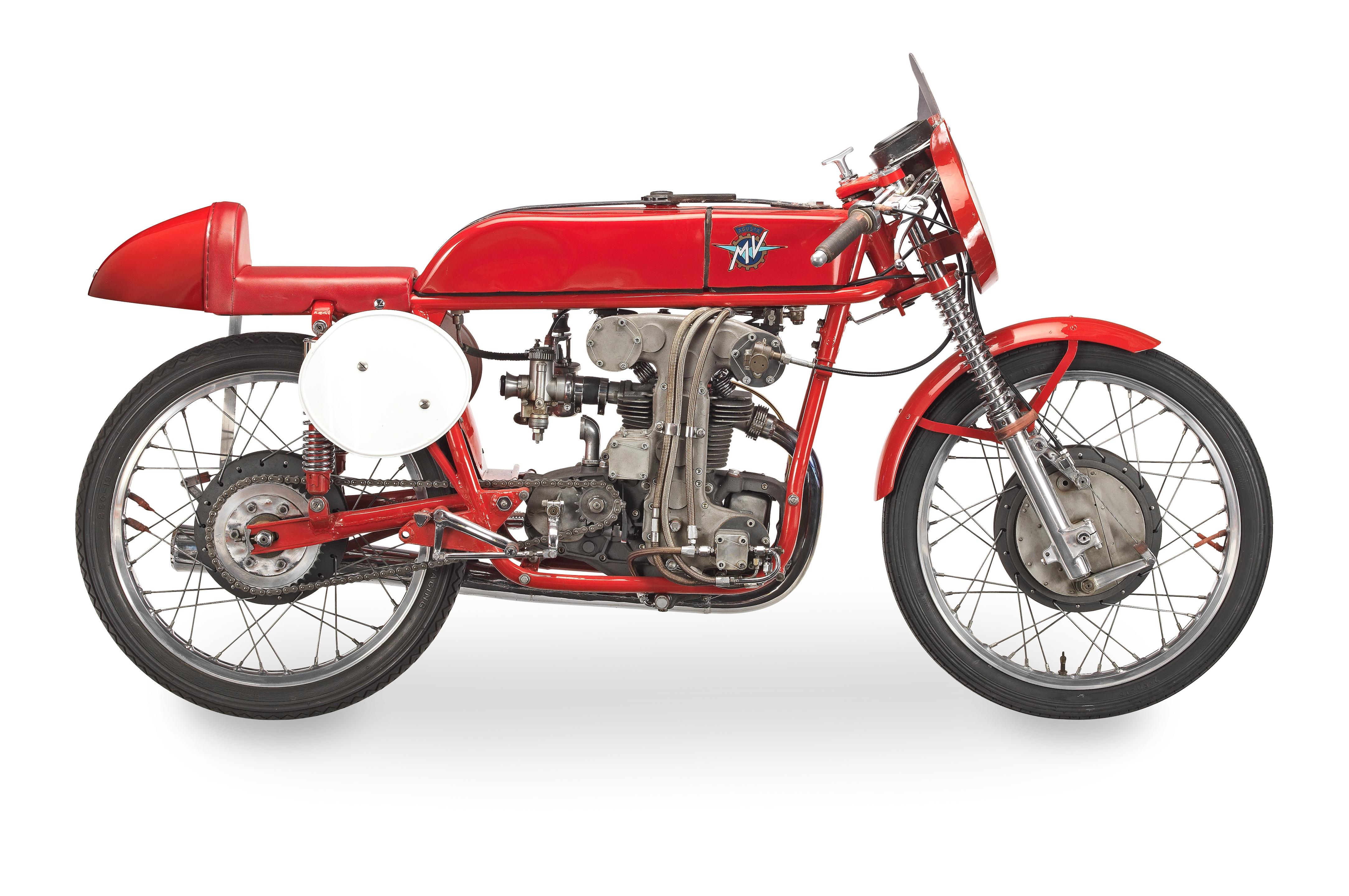

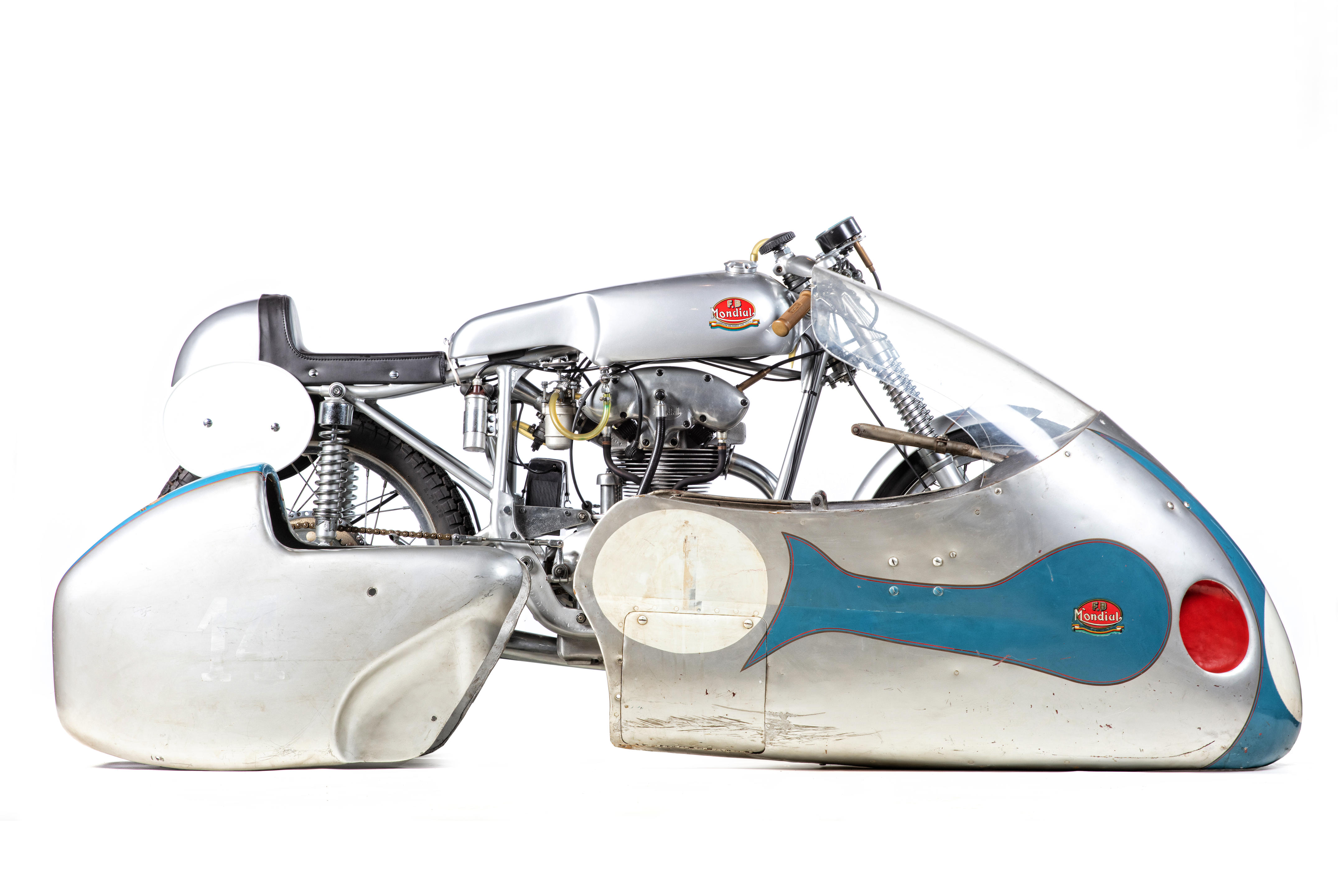

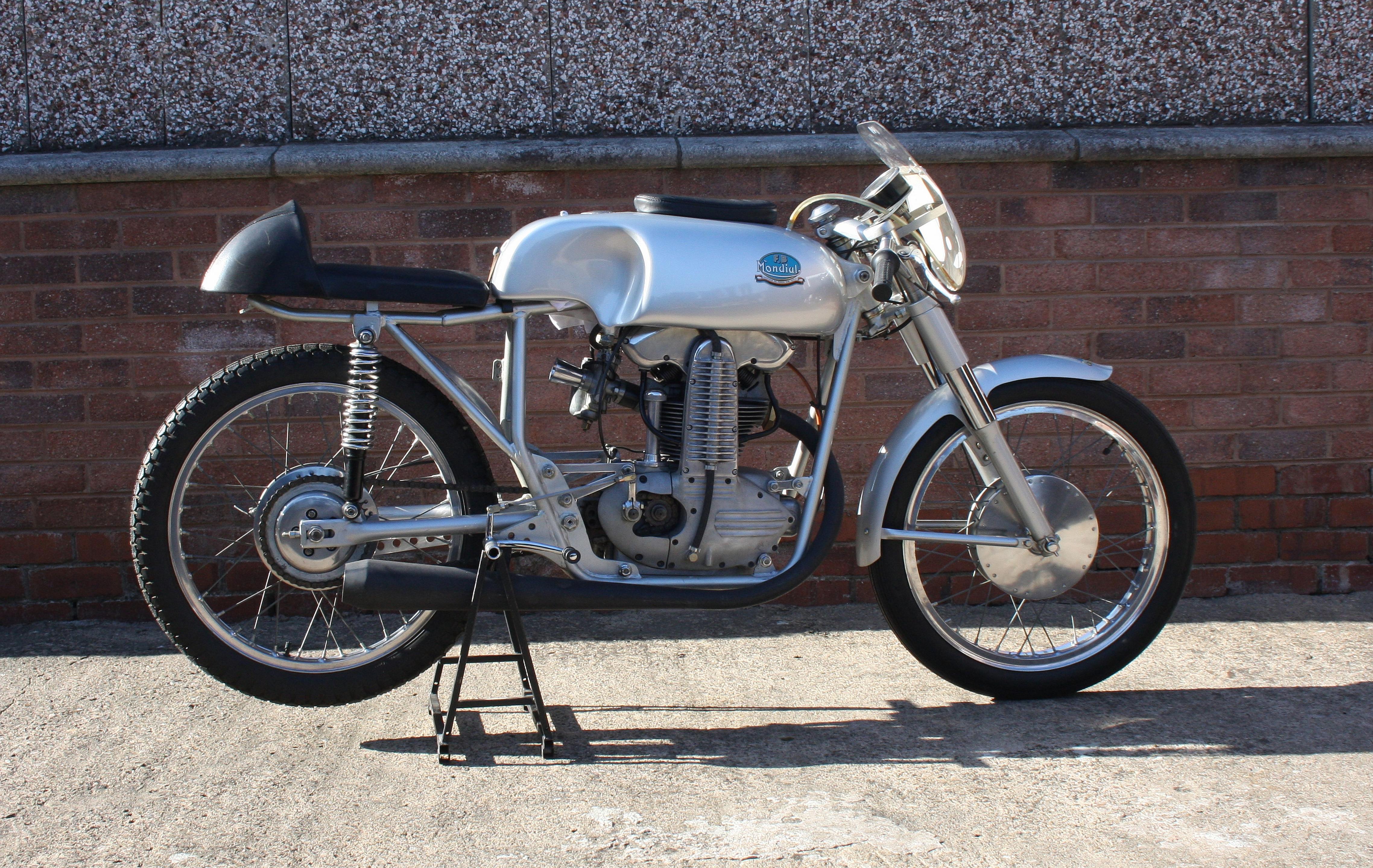

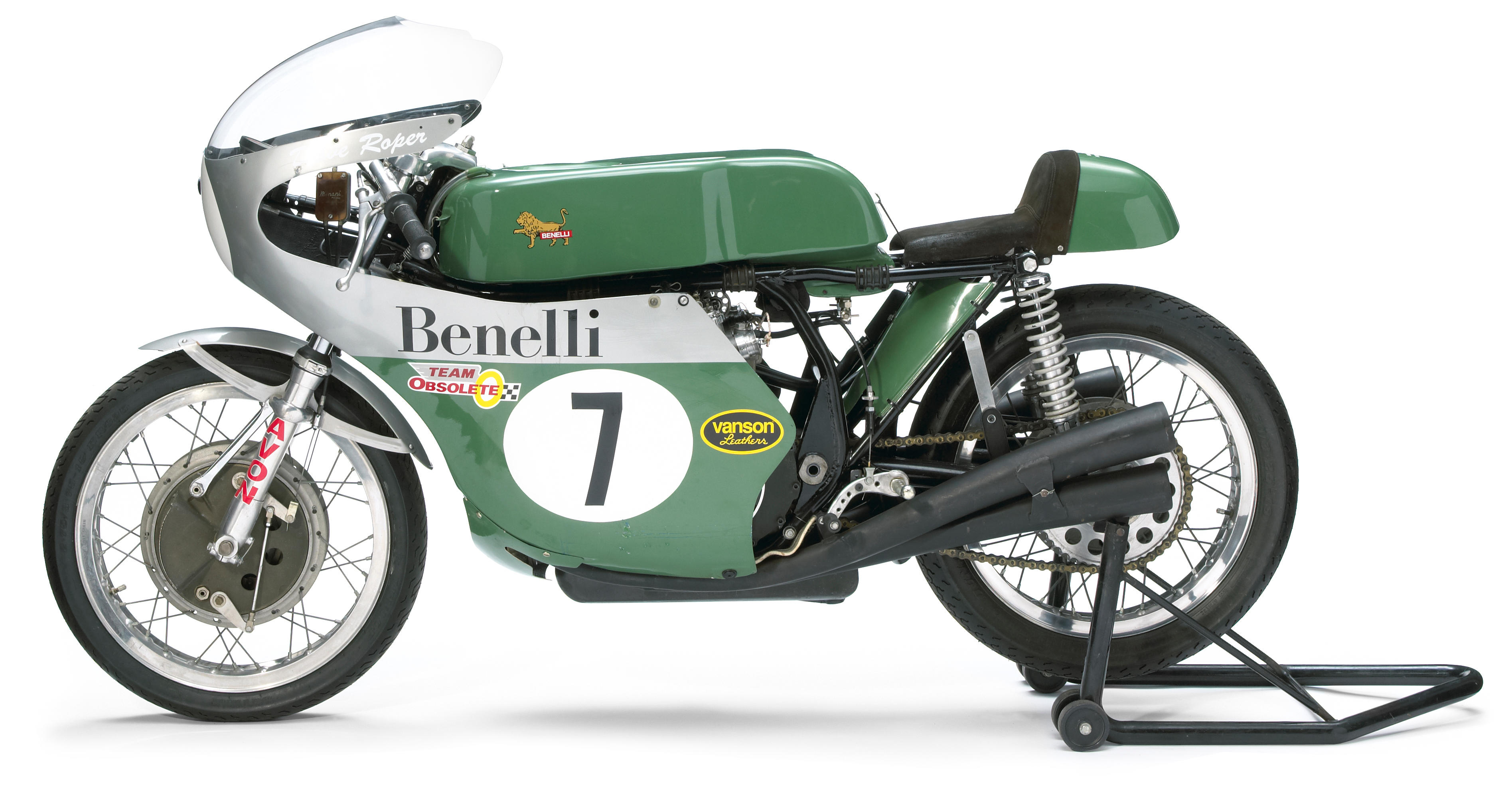

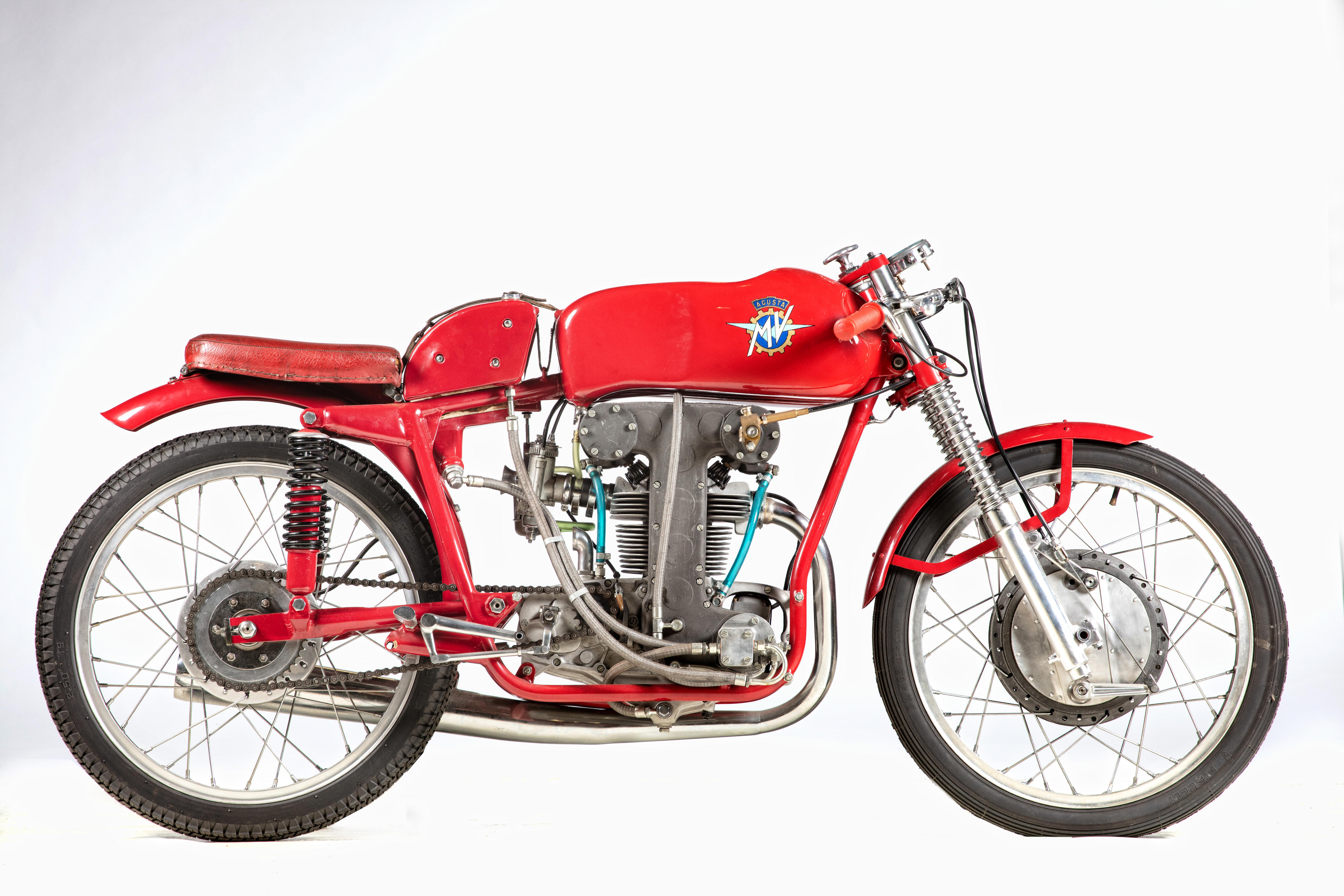

Try LotSearch and its premium features for 7 days - without any costs!
Be notified automatically about new items in upcoming auctions.
Create an alert